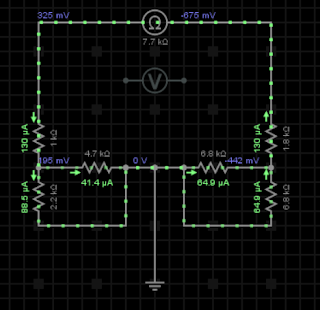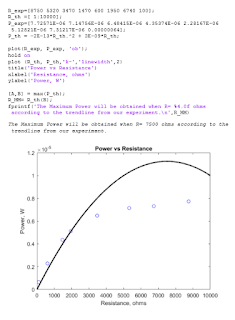3/28/2017
Today we were taught of Thevenin's way of finding Thevenin's voltage and Thevin's resistance, which could be used to find max power.
Here is an example of finding Thevenin's voltage and resistance:
After using derivation, we could find the equation, where
max power = (Vth)^2 / (4*Rth)
Here is an example of solving for Max power:
Also, note that sometimes Rth could be negative, it just means that the circuit is supplying power.
Right at the end of class, we learn of Norton's current, which is the equivalence of Thevenin's Voltage and Thevenin's Resistance transformed using the source transformation method.
Here is an example we did on Norton's current:
"Thevenin's Theorem" Lab
Prelab:
Finding Vth theoretical:
Finding Rth theoretical:
Both of the values also checks out when we tried to plug in using everycircuit:
Here are the values of the resistors that we uses:
First 6.8k ohm resistor
Sccond 6.8k ohm resistor
4.7 k ohm resistor
Thevenin voltage experimental:
Thevenin Resistance experimental:
We then connected a potentiometer, adjusting its resistance, and tested for the voltage difference, collecting voltage data at different resistances:
Using the trendline from excel, we make a mathematical model in matlab, which tells us that the maximum voltage should occur when R= 7.5k ohms, which is 2.667% different than the theoretical that should make the R=7.7k ohms.
Summary:
Thevenin is a genius that enables us to find maximum power using less time. Maximum power is obtained when we set R to be equal to R thevenin, which will gives us a power of
max power = (Vth)^2 / (4*Rth)
Also, potentiometer is pretty neat because it allows us to adjust resistance on the go.

















No comments:
Post a Comment